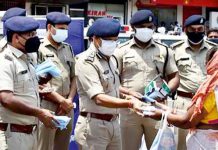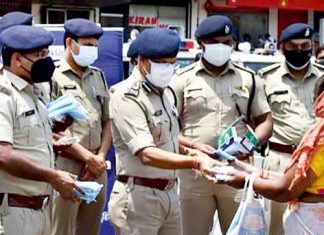![]() In order to discourage hard core criminals from jumping parole and to improve the detection & conviction rates, Mumbai police has decided to obtain Biometric and Iris Scan details of accused persons. The Biometric data is further connected to Crime and Criminal Tracking Network Systems (CCTNS).
In order to discourage hard core criminals from jumping parole and to improve the detection & conviction rates, Mumbai police has decided to obtain Biometric and Iris Scan details of accused persons. The Biometric data is further connected to Crime and Criminal Tracking Network Systems (CCTNS).
With the implementation of a new system all police stations in Mumbai will be equipped with a dedicated computer where the biometric records of accused will be stored.Every police stationwill have a dedicated computer connected to a central server that will maintain biometric records.In the past, manual finger prints of the accused were taken and sent to Modus Operandi Bureau (MOB).
![]() The data will be useful to officers in crime detection. “We lift the fingerprint from crime scene and transfer it to the server for matching. If the fingerprint of the accused matches with the biometric data stored in our server, the accused is easily traced,” said a senior police officer.
The data will be useful to officers in crime detection. “We lift the fingerprint from crime scene and transfer it to the server for matching. If the fingerprint of the accused matches with the biometric data stored in our server, the accused is easily traced,” said a senior police officer.
Besides biometric details, minute details of the accused including his/her date of birth, local & ancestral address, mobile number(s), details of relatives, spouse and children if any are recorded and maintained. Bank account details, PAN and Aadhar card details are also maintained for any future reference.
“Generally, hard core criminals go underground after being released on bail. These details help us in tracing the accused if she/ he commits anyother offence after being released on bail or jumping parole. In a bid to evade arrest, hard core criminals undergo surgery for facelifting or nose reshaping. But with ‘iris scanning’ they can be identified,” said an IPS officer.
According to an officer who feeds the biometric details of accused at Malad police station “We not only record the biometric details of hard core criminals, history sheeters but also that of accused involved in petty crimes. The step is dynamic and discourages young criminals to commit the offence as they are aware they can be traced easily.”
![]() The biometric data is helpful in solving unsolved or complex cases. An officer from Dindoshi police station said, “The biometric data is useful in checking the criminal antecedents of the accused. Recently, we arrested (Narmada Khan) a history sheeter in HBT (House Breaking & Theft) case. We matched her biometric data with our server and got to know that she had committed several such crimes which were unsolved till date.”
The biometric data is helpful in solving unsolved or complex cases. An officer from Dindoshi police station said, “The biometric data is useful in checking the criminal antecedents of the accused. Recently, we arrested (Narmada Khan) a history sheeter in HBT (House Breaking & Theft) case. We matched her biometric data with our server and got to know that she had committed several such crimes which were unsolved till date.”
Navi Mumbai police starts visitor monitoring system
The Navi Mumbai police has started a visitor monitoring system at four police stations, to make policing a better experience for the common citizens. The system was installed recently at Vashi, Nerul, Panvel and Nhava Sheva police stations.
![]() It records details of each visitor digitally,that can be reviewed at any point of time. If the pilot project is successful, it will be replicated at all police stations. The system uses webcam to capture the visitor’s photograph. The image is recorded in the system with details such as the reason for the visit and time of exit from the police station. This helps senior officers in keeping a tab on the activities at their police stations. A unit will be set up at the commissionerate to monitor all police stations. The system will be helpful to the visitors too. Often, citizens submit applications without acknowledgement since they are not aware and therefore do not come to know the exact status of their applications. Most of the times, the applications are not acted upon. Officers will review the system log every 15 days and inform the applicant of the status. The implementation process of the system is at a preliminary stage.
It records details of each visitor digitally,that can be reviewed at any point of time. If the pilot project is successful, it will be replicated at all police stations. The system uses webcam to capture the visitor’s photograph. The image is recorded in the system with details such as the reason for the visit and time of exit from the police station. This helps senior officers in keeping a tab on the activities at their police stations. A unit will be set up at the commissionerate to monitor all police stations. The system will be helpful to the visitors too. Often, citizens submit applications without acknowledgement since they are not aware and therefore do not come to know the exact status of their applications. Most of the times, the applications are not acted upon. Officers will review the system log every 15 days and inform the applicant of the status. The implementation process of the system is at a preliminary stage.
“With this system, since everything will be digitalized, police officers will become more accountable and responsible for their work,” said Anarjit Chauhan, social worker.













